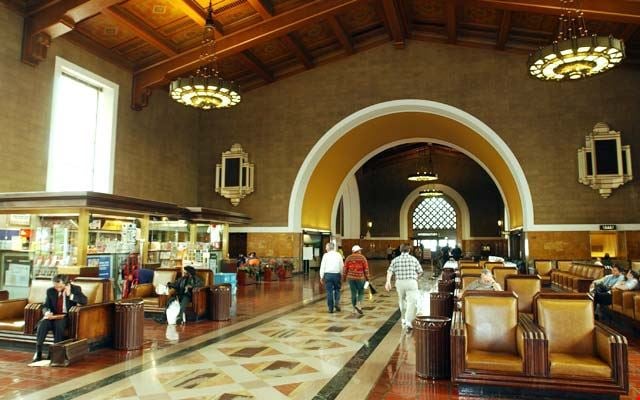





Displaying the most recent advisories for your results. Select a line below to view.
Latest: {{line.ServiceAdvisories[0].Timestamp.split(" ")[1]}} {{line.ServiceAdvisories[0].Timestamp.split(" ")[2]}} {{line.ServiceAdvisories[0].Timestamp.split(" ")[0]}}
{{serviceAdvisory.Timestamp.split(" ")[0]}} {{serviceAdvisory.Timestamp.split(" ")[1]}} {{serviceAdvisory.Timestamp.split(" ")[2]}}
{{serviceAdvisory.Message}}
Dates Affected: {{plannedAdvisory.DateRangeOutput}}
{{plannedAdvisory.Message}} Read More
Valid tickets are required on all Metrolink platforms and on trains.
Due to increased demand, Los Angeles World Airports (LAWA) is expanding its FlyAway bus service to offer non-stop service from Los Angeles Union Station to LAX
The Airport FlyAway buses will depart from Union Station.
Station to Airport
Airport to Station
Metro's Dodger Stadium Express provides service from L.A. Union Station directly to Dodger Stadium, connecting Metrolink riders on game days. During the 2024 MLB season, the Dodger Stadium Express service will operate out of Patsaouras Plaza, Bus Bay 9, on the east end of Union Station.
Rail 2 Rail offers Metrolink Monthly Pass Holders additional travel options on Amtrak Pacific Surfliner trains. Click on Rail 2 Rail for more details.
Los Angeles Union Station Website
Los Angeles Union Station Poster
Going to an event? Check out our rideshare partner Rally to help you to complete your journey. Rally is the creator of bus rideshare, bringing the benefits of charter bus travel to individuals. Partnering with the NFL teams, NASCAR tracks, and dozens of music festivals, they have extended the event experience through the travel time.